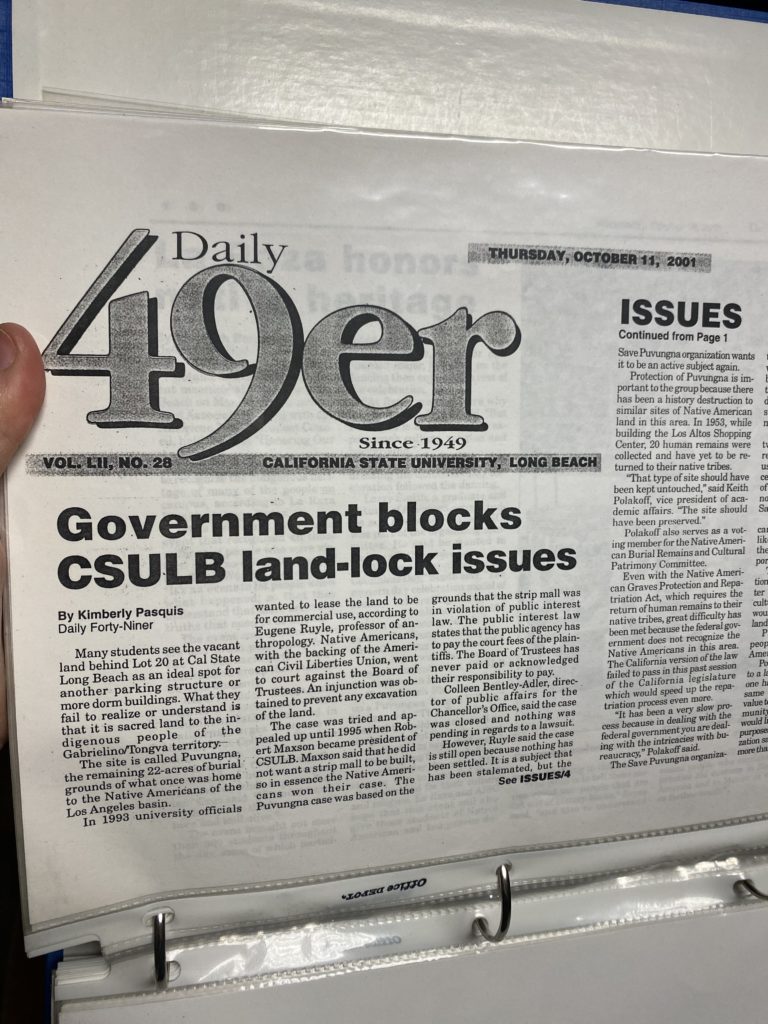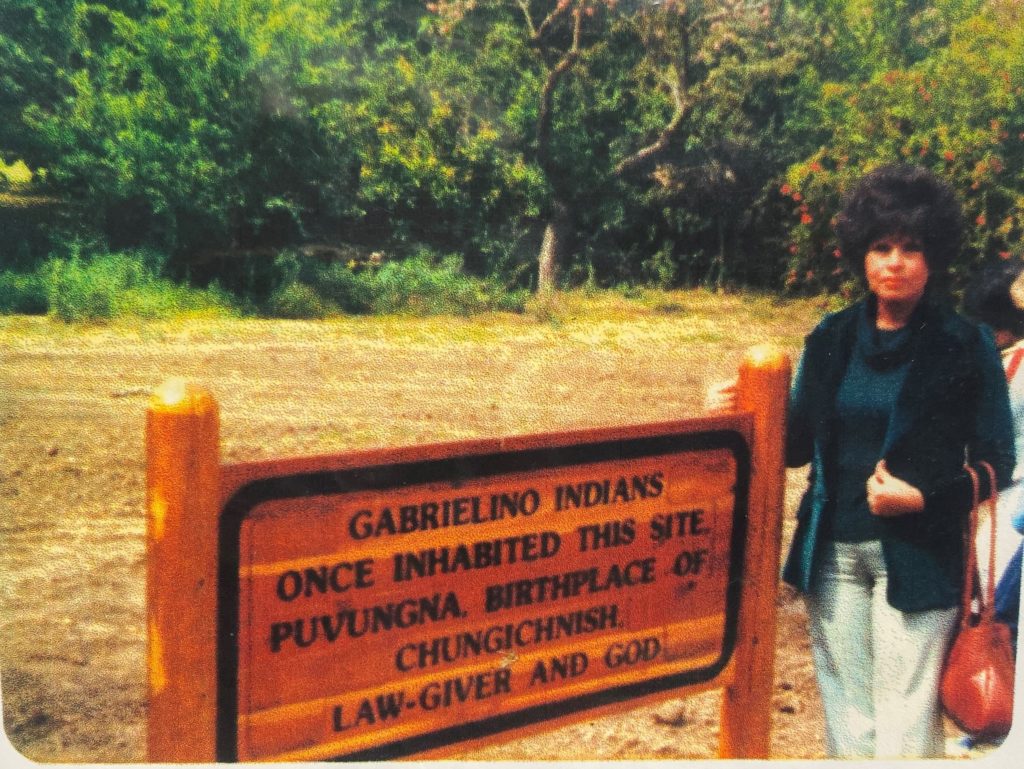This week, my colleague and I successfully organized all of Barbara’s materials into their parent categories pertaining to research, education and Drake’s biographical materials. While sorting materials into the category pertaining to Drake herself, it was impossible not to notice what a purposeful, full and meaningful life she led. Her efforts made in the pursuit of reparations for Indigenous peoples was both wide in breadth and tangible success.
Some of the materials I was struck by surrounded the legal battle between CSULB and the Gabrielino/Tongva Nation to reinter remains found on CSULB campus property, remains consistent with the geographical and chronological ancestry of the Los Angeles Basin Native Americans. In short, in Long Beach, and other areas of Los Angeles county Indigenous remains had been found during the process of commercial development throughout the decades. During the many decades of enduring the painful displacement of ancestors, Native Americans were often required to obtain legal representation to pursue their right to reinter their ancestors. From the documents carefully preserved by Barbara, it appears this was the case for ancestors found in proximity to CSULB as well.
After a lengthy process of litigation, a portion of the ancient Indigenous village of Puvungna located on the CSULB campus, was preserved as a site of Indigenous cultural significance. As recently as 2021, the site was formally protected in perpetuity, ensuring no construction or development would ever be permitted to disturb the land again. It must be noted, that Barbara Drake, along with others in her Indigenous community placed themselves on the front lines of litigation to preserve their culture, heritage and civil liberties for generations to come. It must be dually noted that these efforts were pursued, even when local, state and federal governments had the nerve to seek to dismiss the wishes (in full or in part) of Indigenous descendants on the grounds of “lack of federal recognition”. To this, I ask, what good is “federal recognition” when the identities and existence of factions like the Gabrielino/Tonva Nation preceded the existence of the government and the United States as a whole? Barbara’s collection thus far has taught me many things I didn’t know I had to learn, and has afforded me a wider scope in which to consider history. I am confident this collection will have the same effect on anyone that interacts with its hugely significant contents.

